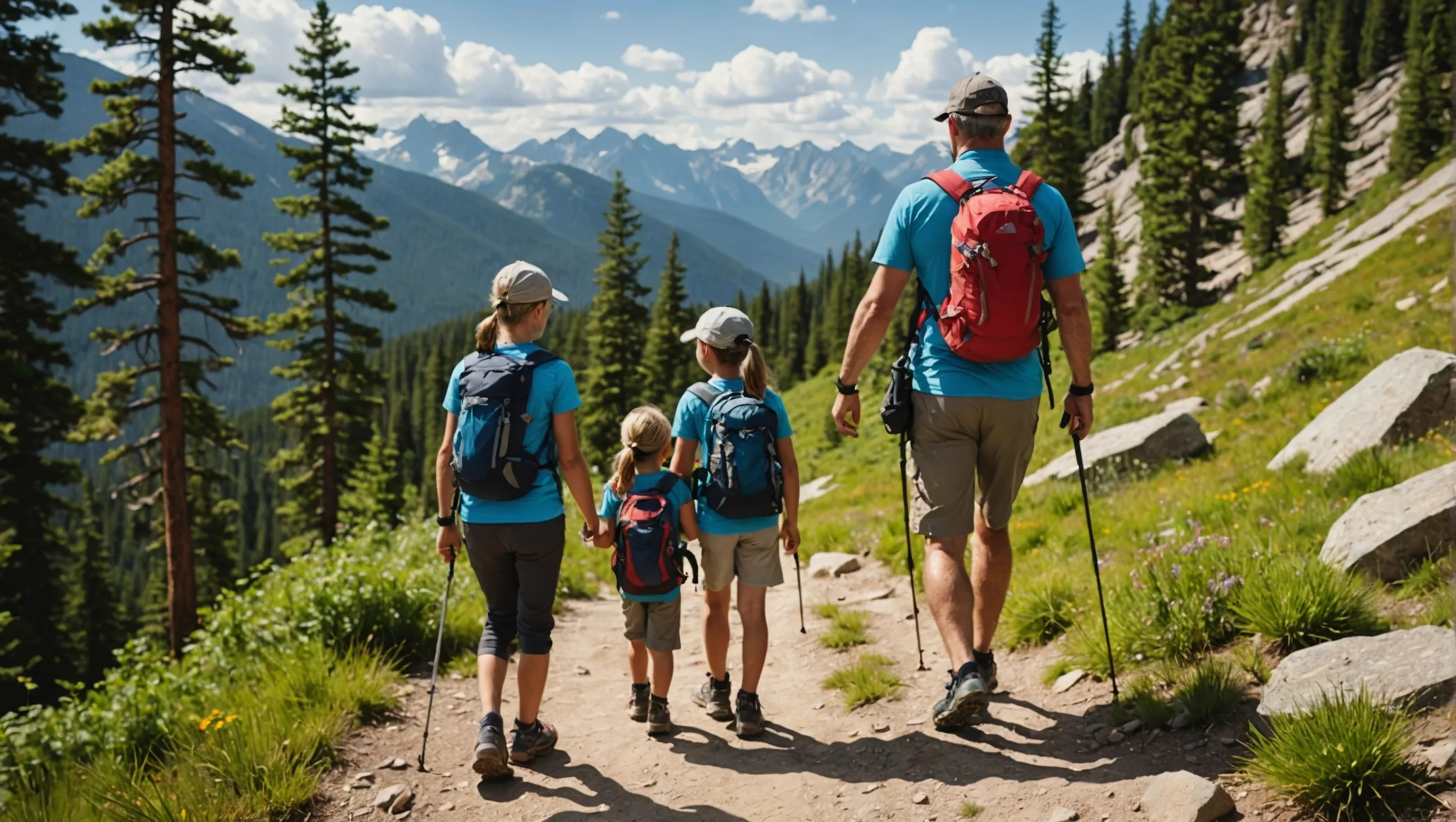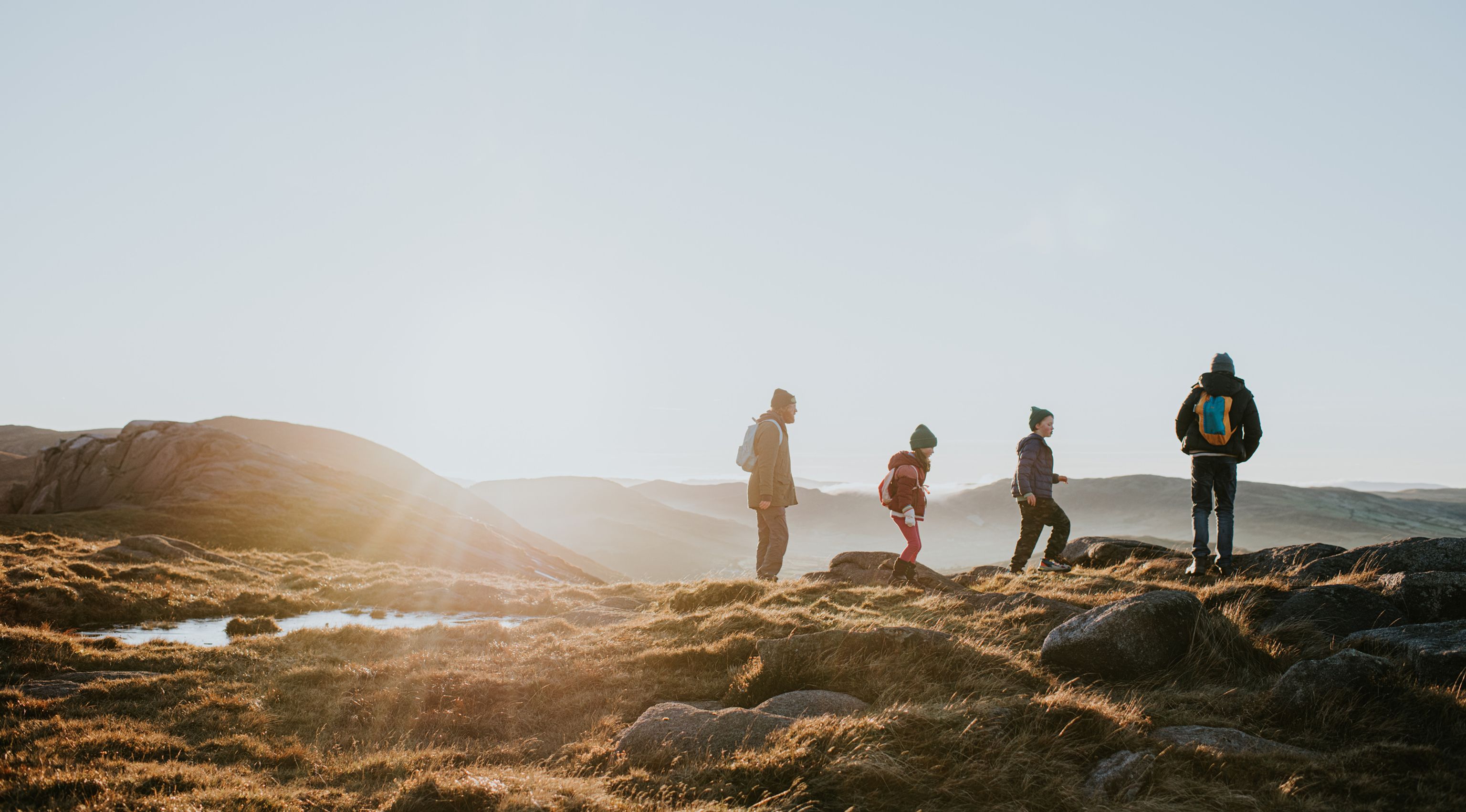Hiking Trails and Nature Spots for Families
 HHomeExchange
HHomeExchangeTop Hiking Trails for Families Planning a Trip
When planning a family hiking trip, selecting the right trails is crucial. Here are some of the top hiking trails perfect for families:
Angel's Landing in Zion National Park offers stunning views and a moderate challenge.
Bear Mountain in New York features a scenic path suitable for children.
Mount Rainier has family-friendly trails like the Grove of the Patriarchs.
Grand Canyon has accessible trails that provide breathtaking scenery.
These trails cater to various skill levels, ensuring a fun experience for the whole family.
Family-Friendly Hiking Trails
Finding the right family-friendly hiking trails can make your outdoor adventure enjoyable and memorable. Here are some excellent options that cater to families with children:
Great Smoky Mountains National Park: With numerous easy trails like the Cataract Falls and Laurel Falls, this park is perfect for families looking to enjoy nature without strenuous hikes.
Acadia National Park: The Jordan Pond Path offers a beautiful, flat trail with stunning pond views, making it ideal for little legs.
Redwood National and State Parks: Experience the majesty of towering trees on the Lady Bird Johnson Grove Trail, which features a relatively easy loop surrounded by ancient redwoods.
Blue Ridge Parkway: This scenic drive has numerous short, family-friendly hikes, such as the Craggy Gardens Trail, where families can enjoy wildflowers and panoramic views.
When selecting a trail, consider the distance, elevation gain, and the interests of your family. Many trails offer educational opportunities, allowing kids to learn about local wildlife and plants. Always pack enough water and snacks to keep everyone energized.
With the right planning, hiking can be a fantastic way for families to bond and explore the great outdoors together, creating lasting memories in nature.

Safety Tips for Hiking with Kids
Hiking with kids can be a fun and rewarding experience, but safety should always be a top priority. Here are some essential safety tips for hiking with kids to ensure a safe adventure:
Choose the Right Trail: Opt for well-marked, easy trails that match your family's skill level. Avoid overly challenging paths that could frustrate young hikers.
Dress Appropriately: Ensure everyone wears suitable clothing and sturdy hiking shoes. Dress in layers to adapt to changing weather conditions.
Stay Hydrated: Bring plenty of water for everyone. Kids can get dehydrated quickly, especially on warm days.
Pack Snacks: Healthy snacks can keep energy levels up. Trail mix, fruits, and granola bars are excellent choices.
Teach Trail Etiquette: Educate kids about respecting nature, staying on the trail, and not disturbing wildlife.
Keep an Eye on Them: Always supervise younger children, especially near cliffs or steep areas. Use a buddy system for older kids.
Set a Comfortable Pace: Allow for frequent breaks. This helps prevent fatigue and keeps spirits high.
Have a Plan: Make sure to discuss what to do in case of an emergency, including who to contact and where to meet.
By following these tips, families can enjoy a safe and fun hiking experience while creating cherished memories in the great outdoors.
Nature Spots to Explore on Your Hiking Trip
When planning your hiking trip, consider exploring these beautiful nature spots:
Waterfalls: Locations like Multnomah Falls in Oregon offer stunning views and refreshing mist.
Scenic Overlooks: Trails leading to spots like Bear’s Lodge in Wyoming provide breathtaking panoramas.
Wildflower Fields: In places like Mount Rainier, vibrant blooms create picturesque landscapes.
Lakes: Trails around Lake Louise in Canada offer tranquility and reflection opportunities.
These nature spots enhance your hiking adventure, making it memorable for the whole family.
National Parks with Family Activities
National parks offer a wealth of family activities that make for memorable outdoor adventures. Here are some top picks:
Yosemite National Park: Known for its stunning granite cliffs, families can enjoy guided nature walks, rock climbing classes, and Junior Ranger programs that engage kids with the park's ecology.
Yellowstone National Park: This iconic park features geothermal wonders and abundant wildlife. Families can explore via ranger-led programs, geyser watching, and visiting the Yellowstone Lake for fishing or picnicking.
Grand Canyon National Park: With breathtaking views and hiking options, families can take guided rim tours or participate in educational programs to learn about the canyon's geology and history.
Great Smoky Mountains National Park: Families can enjoy hiking, wildlife spotting, and even horseback riding. The park's visitor centers offer hands-on activities and information about the local flora and fauna.
Acadia National Park: Known for its picturesque coastal views, families can bike along the carriage roads, explore tide pools, and visit the park's scenic overlooks.
These national parks provide diverse family-friendly activities that promote learning, exploration, and adventure. Whether it's hiking, educational programs, or simply enjoying nature together, these experiences foster family bonding and create lasting memories.
Best Nature Reserves for Families
Exploring nature reserves can be a fantastic way for families to connect with the outdoors while enjoying educational experiences. Here are some of the best nature reserves that cater to families:
Everglades National Park: This unique ecosystem offers guided tours where families can see alligators, manatees, and a variety of bird species. Kids can participate in Junior Ranger programs that teach them about the importance of wetlands.
Point Reyes National Seashore: Located in California, this reserve features stunning coastal views, hiking trails, and opportunities for tide pooling. Families can also enjoy wildlife viewing, particularly elephant seals and migratory birds.
Carlsbad Caverns National Park: Explore the incredible underground formations and join ranger-led tours. The park also hosts evening bat flights during the summer, which is a thrilling sight for families.
New River Gorge National Park: In West Virginia, this reserve offers rock climbing, white-water rafting, and scenic overlooks. Families can hike along trails that provide stunning views of the gorge and surrounding mountains.
Chincoteague National Wildlife Refuge: Famous for its wild ponies, this refuge allows families to explore beaches, marshes, and forests. Kids can learn about local wildlife and the importance of conservation.
These nature reserves not only provide opportunities for outdoor recreation but also foster an appreciation for nature, ensuring that families leave with unforgettable memories and valuable lessons.
Planning Your Hiking Adventure
Planning your hiking adventure involves several key steps to ensure a successful trip. First, research and choose a trail that matches your family's skill level and interests. Check the weather forecast to dress appropriately and pack essential gear, including water, snacks, and a first-aid kit. Make a checklist to ensure you don't forget anything important. Consider downloading trail maps or using a GPS device for navigation. Lastly, inform someone about your plans, including your expected return time. With proper preparation, you can enjoy a safe and fun hiking experience with your family.
What to Pack for Family Hikes
When heading out for a family hike, packing the right gear is essential for ensuring everyone has a safe and enjoyable experience. Here’s a list of what to pack for family hikes:
Water: Hydration is key. Bring a sufficient supply of water for each family member, preferably in reusable water bottles.
Snacks: Energy-boosting snacks like trail mix, granola bars, and fresh fruit can keep everyone energized. Aim for nutritious options that are easy to carry.
First-Aid Kit: Always be prepared for minor injuries. A basic kit should include band-aids, antiseptic wipes, and any personal medications.
Navigation Tools: Carry a map and compass or a GPS device to stay on track. Download trail maps on your smartphone for offline use.
Clothing: Dress in layers to adapt to changing weather. Include moisture-wicking shirts, comfortable pants, and a light jacket.
Footwear: Sturdy hiking shoes or boots provide support and traction. Make sure everyone’s footwear is broken in to prevent blisters.
Sunscreen and Bug Spray: Protect your family from sunburn and insects by applying sunscreen and using insect repellent.
Backpack: A comfortable backpack is essential for carrying supplies. Choose one that’s appropriate for the duration of your hike.
By packing thoughtfully, families can focus on enjoying nature and creating lasting memories together.
How to Choose the Right Trail for Your Family
Selecting the right trail for your family hike is crucial to ensure a fun and enjoyable experience. Here are some key factors to consider when choosing the right trail:
Skill Level: Assess the hiking abilities of your family members. Beginners and young children may require easier, flatter trails, while more experienced hikers can handle moderate to challenging paths.
Length and Duration: Consider how long the hike will take. For families with young kids, a shorter trail (1-3 miles) is often best to avoid fatigue. Look for trails that offer loops or options to turn back if needed.
Scenery and Attractions: Choose trails that offer interesting landscapes, such as waterfalls, scenic overlooks, or unique rock formations. Kids are more likely to stay engaged if they have something to look forward to.
Trail Conditions: Research the trail’s current condition. Some trails may be affected by weather or maintenance work. Websites and local hiking groups can provide up-to-date information.
Accessibility: Ensure the trail is accessible for all family members. Look for paths with minimal obstacles, such as steep inclines or rocky terrain, especially for younger children or those with mobility issues.
Wildlife and Safety: Check if the area is known for wildlife encounters. Familiarize your family with safety measures, such as staying on marked trails.
By considering these factors, families can select a trail that ensures a safe and enjoyable hiking experience, filled with adventure and exploration.
